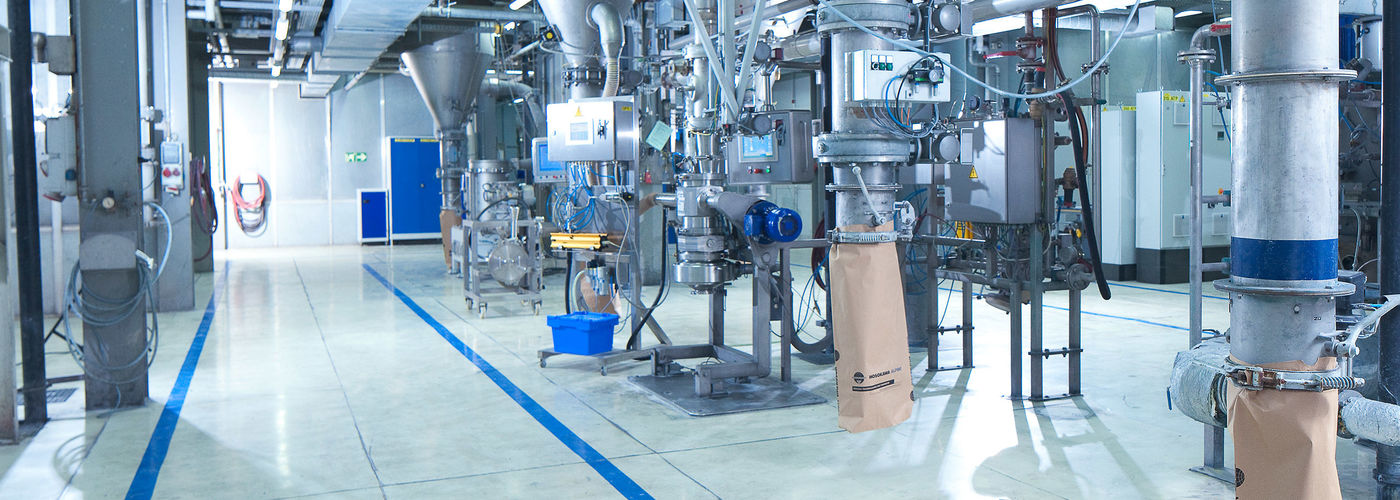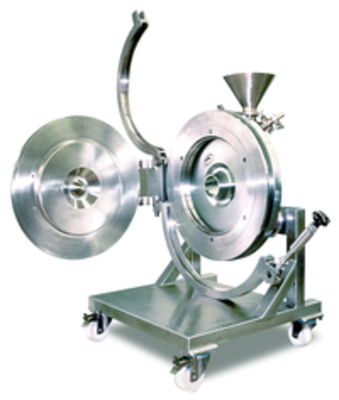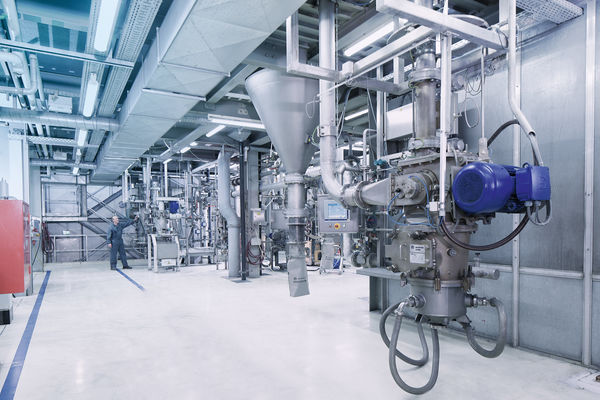The grinding air is injected tangentially via Laval nozzles in the nozzle ring into the machine. This causes a spiral jet of air to form in the grinding zone, from which the mill derives its name. A high pressure forms in the mill as a result of the spiral flow of air that can rise to 1 bar overpressure in operation without product. The integrated injector is charged with compressed air which ensures that the product is conveyed into the machine against the overpressure present in the machine. This, however, is associated with a considerable compressed air consumption, which can be as much as 30% of the total grinding air requirement.
The feed product circulates close to the nozzle ring and is thus intercepted repeatedly by the air jets exiting the nozzles. Comminution is the result of interparticle collision caused by the particles flowing at different speeds in the nozzle jet. Comminuted material is conveyed along with the air to the discharge, the spiral flow subjects the particles to a classification: only fine particles are discharged, coarse particles remain in the mill.
Alpine's spiral jet mills are characterised by a special geometry of the mill housing in the area of the discharge, which contributes towards a finer classification effect and a sharp top cut.
The product also has an effect on the air flow within the machine: the more product there is in the machine, the more the spiral flow is braked and the lower is the centrifugal force and the coarser the end product. The relationship of the product to the classifying air flow rate is therefore the most significant parameter for setting the fineness of the spiral jet mill. In principle, different nozzle angles can also be used to achieve the required fineness values, whereby the complete nozzle ring must be exchanged in this case.





